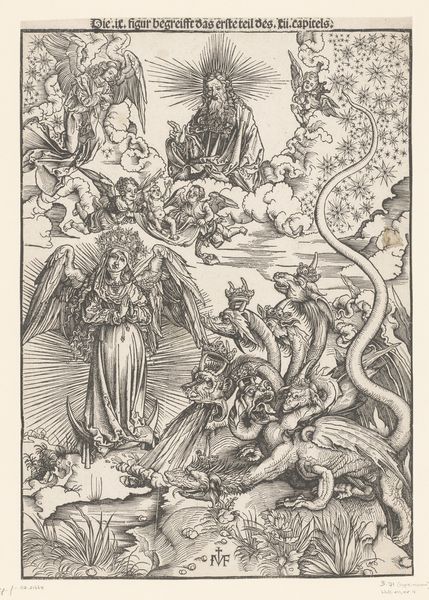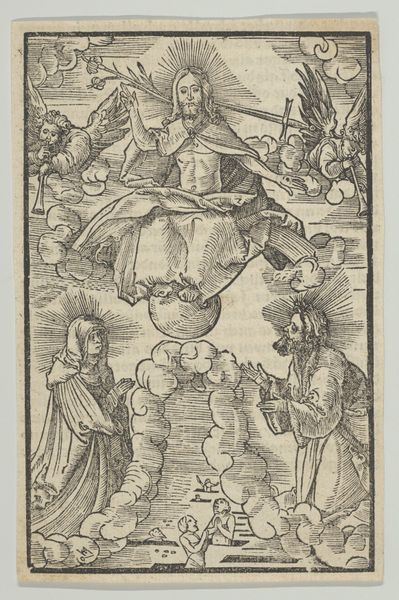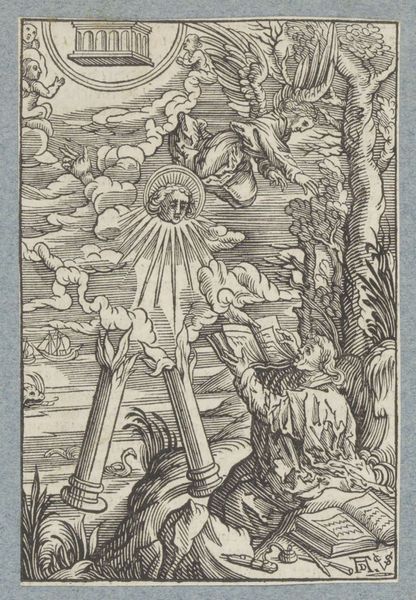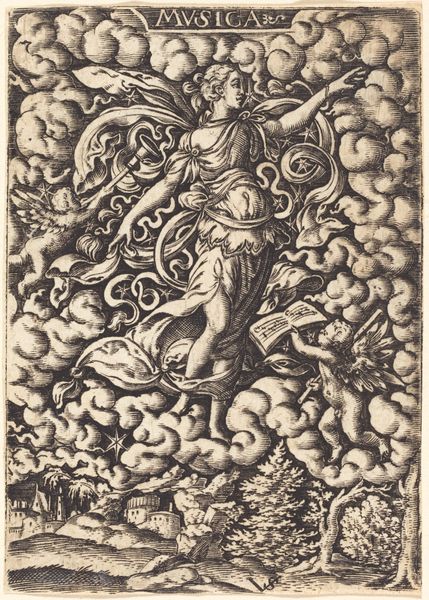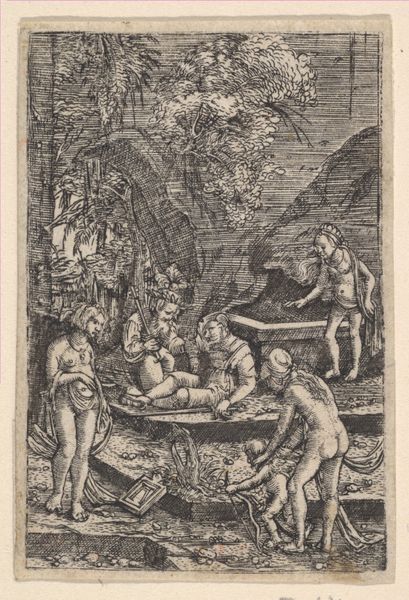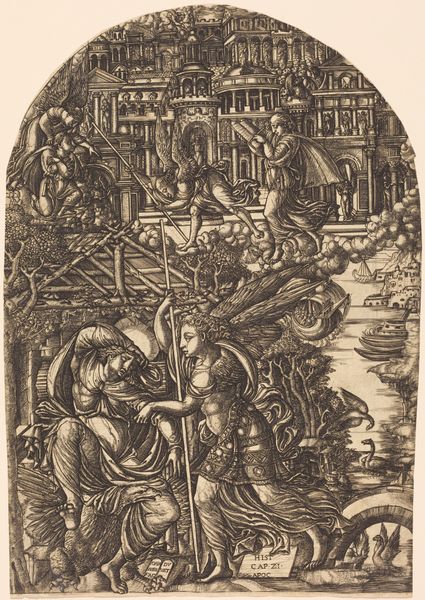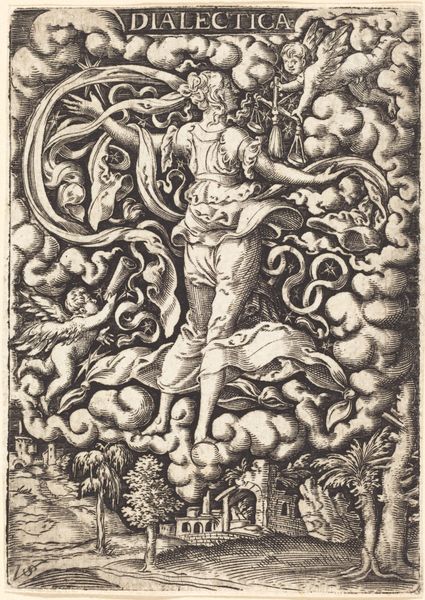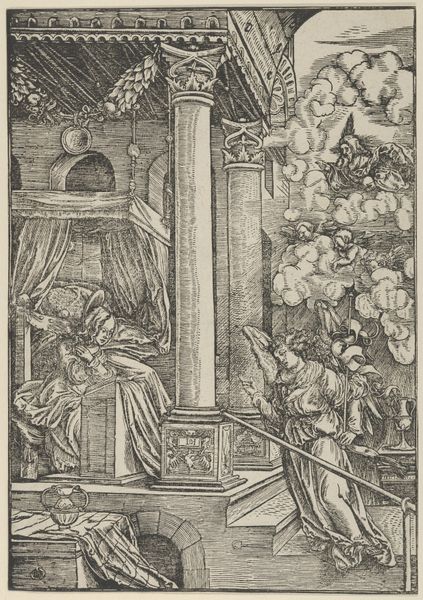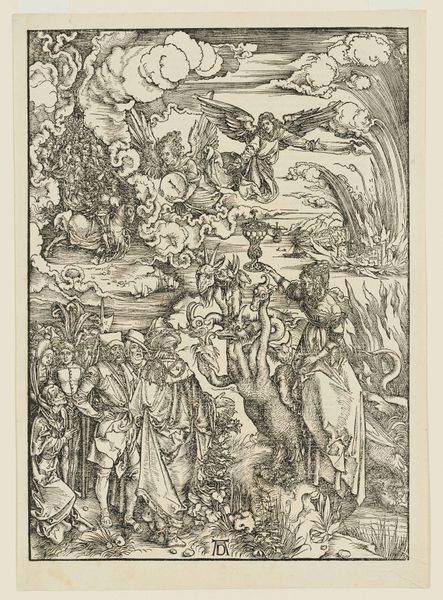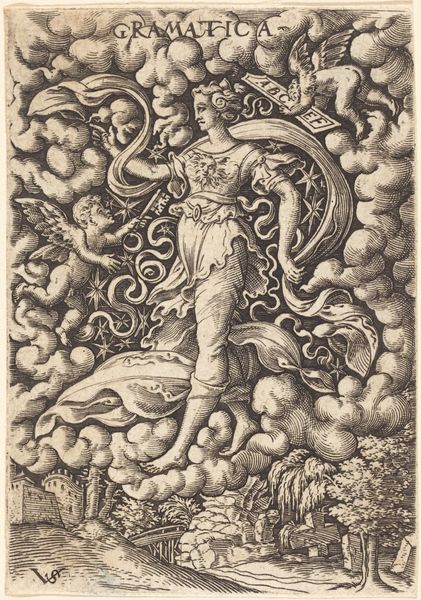
John Perceiving the Seven Candlesticks, from The Apocalypse 1523 - 1524
0:00
0:00
drawing, print, ink, woodcut, engraving
#
drawing
#
narrative-art
#
pen drawing
# print
#
pen illustration
#
pen sketch
#
figuration
#
ink
#
woodcut
#
northern-renaissance
#
engraving
Dimensions: Sheet: 6 3/8 × 5 1/8 in. (16.2 × 13 cm)
Copyright: Public Domain
Editor: So this is Hans Burgkmair's woodcut, "John Perceiving the Seven Candlesticks," made around 1523. The dramatic contrast between light and shadow is pretty striking. How do you interpret this work, especially considering its historical context? Curator: This piece is fascinating as it visually interprets a very loaded and controversial text, the Book of Revelation, during a period of massive religious upheaval. Consider the historical moment. Burgkmair was working during the early years of the Reformation. Images like these tapped into pre-existing anxieties about religious authority, picturing divine judgment and, perhaps, fueling reformist sentiment. What do you make of the way John is depicted? Editor: He seems almost overwhelmed, prostrate before the divine figure. Is this purely a depiction of religious awe? Curator: It could also be read as a commentary on power, right? The figure of John, representing the faithful, is humbled. Meanwhile, the radiant, almost androgynous figure amidst the candlesticks holds undeniable authority, an authority that was, at the time, being heavily questioned and renegotiated. Notice how the seven candlesticks rise like obstacles around John? Editor: Yes, I see that. The candlesticks towering around him definitely contribute to his vulnerability. Curator: Exactly! And consider the choice of a woodcut. This medium made the image accessible, easily reproduced and widely disseminated, a perfect tool for spreading ideas during this era of religious reform. Think about it - How might this image have impacted viewers at the time, considering the widespread social and religious anxieties? Editor: It’s amazing how much historical context can change the way you see a piece. It really makes you think about how art interacts with the world around it. Curator: Precisely! Seeing art as deeply embedded within specific historical and cultural forces allows us to ask critical questions about power, representation, and the ongoing relevance of these narratives.
Comments
No comments
Be the first to comment and join the conversation on the ultimate creative platform.
